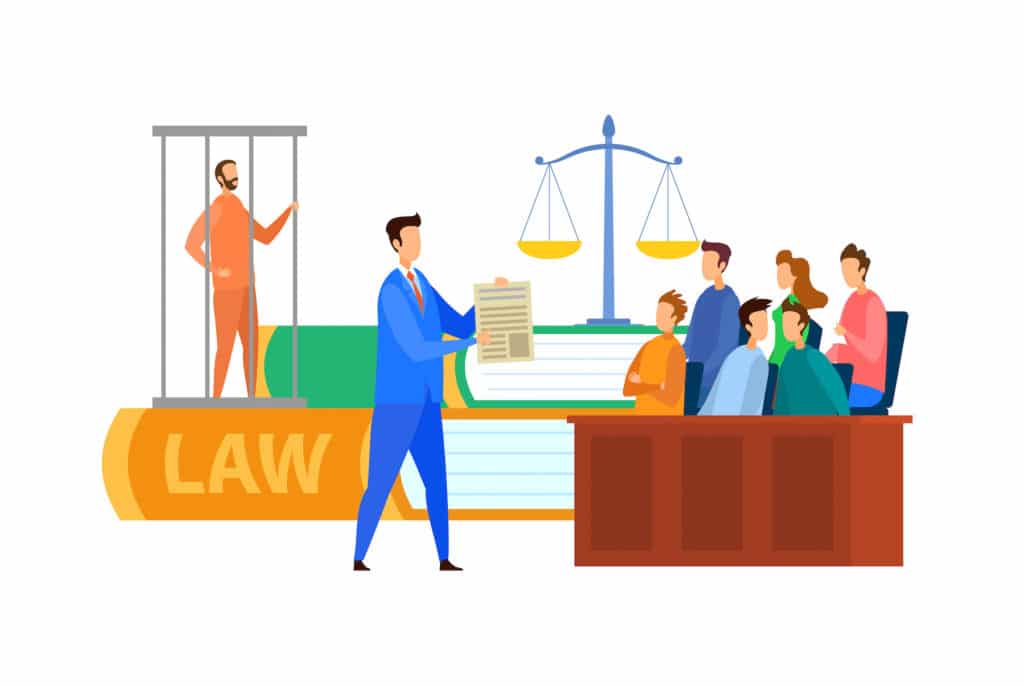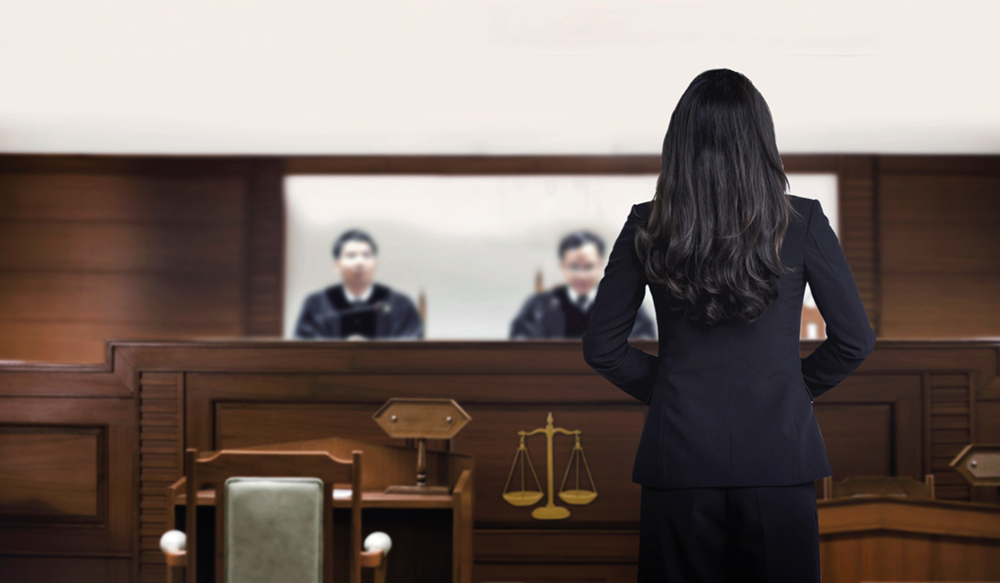Grasping the Art of Trial Presentations: Key Methods for Reliable Legal Arguments
Grasping the Art of Trial Presentations: Key Methods for Reliable Legal Arguments
Blog Article
Browsing the Intricacies of Trial Presentations: Tips for Seamless Delivery and Engaging Disagreements
In the realm of lawful proceedings, the art of test presentation stands as a critical component of success. As attorneys browse the elaborate internet of courtroom characteristics, the ability to flawlessly provide debates and evidence while astounding the jury's interest becomes vital. The complexities intrinsic in test presentations call for a delicate equilibrium of ability, technique, and skill. By developing methods that ensure a polished shipment and crafting engaging arguments that resonate with the target market, lawyers can substantially boost their campaigning for. In a world where persuasion preponderates, grasping the details of test presentations is not merely a choice yet a need for those seeking to prevail in the courtroom.

Comprehending Test Purposes
To effectively navigate a trial, it is important to have a clear understanding of the purposes that require to be achieved. Before stepping into the court, lawful groups have to specify their objectives and wanted outcomes. These objectives work as directing principles throughout the trial, shaping methods and affecting decision-making procedures.
Recognizing test purposes entails a thorough evaluation of the instance, lawful criteria, and the customer's benefits. Trial Presentations. It calls for a thorough exam of the realities, recognizing vital concerns, and preparing for prospective difficulties. By setting particular and measurable objectives, lawyers can customize their disagreements and presentations to straighten with the preferred results
Furthermore, a clear grasp of test purposes allows legal groups to focus on evidence, witnesses, and legal debates properly. It enables the advancement of a coherent story that resonates with the discretionary, enhancing the overall instance discussion.

Organizing Evidence Effectively
Having a clear understanding of trial purposes lays the structure for organizing evidence effectively in lawful procedures - Trial Presentations. By aligning the presentation of proof with the preferred outcomes of the trial, lawful teams can strengthen their debates and improve their persuasiveness. One important aspect of arranging evidence is categorization. Organizing evidence based upon styles or relevance to specific lawful elements can aid enhance the presentation and make intricate info more absorbable for the judge or court.
Another crucial element in arranging proof efficiently is developing a logical circulation. Presenting proof in a consecutive and coherent way can aid develop an engaging narrative that supports the lawful arguments being made. Furthermore, making use of visual aids such as timelines, graphes, or graphs can further improve the company of evidence and assist in clearing up intricate relationships or sequences of occasions.
In addition, guaranteeing that all proof offered is admissible and relevant to the instance is important. Pointless or inadmissible proof can detract from the strength of the disagreement and possibly hurt the reputation of the presenting party. A meticulous review and selection procedure should be undertaken to consist of just the most legitimately audio and impactful evidence in the trial presentation.
Crafting Persuasive Narratives
Crafting engaging stories plays a crucial duty in presenting persuasive arguments during legal proceedings. A well-crafted narrative has the power to captivate the audience, evoke emotions, and ultimately sway the decision for today party. When constructing a narrative for a trial discussion, it is necessary to establish a clear story that highlights vital factors and attaches them in a systematic way. Begin by detailing the truths of the situation in a compelling manner, ensuring that the series of occasions is simple to comply with. Introduce characters check my blog effectively, giving history info that assists the audience recognize their inspirations and actions. In addition, integrating vibrant descriptions and interesting language can bring the story to life, making it much more memorable for the discretionary. By weaving together proof, statement, and legal debates right into a influential and natural narrative, lawyers can properly promote for their customers and raise the probability of a positive outcome in the court room.
Understanding Visual Aids
Reliable usage of visual aids is vital to enhancing the effect and quality of test presentations. Visual help, when made use of strategically, have the power to simplify complicated details, reinforce bottom lines, and leave a long-term impression on the judge and jury. To grasp aesthetic help in test discussions, it is essential to try this out make sure that they are clear, succinct, and pertinent to the debates being made.
When incorporating visual aids, such as charts, timelines, photos, or graphs, right into a trial discussion, it is necessary to maintain them aesthetically appealing yet specialist. The visuals need to enhance the spoken debates, giving a graph of the info being gone over without frustrating the target market with unnecessary details.
Furthermore, experimenting the visual help ahead of time is essential to ensure a seamless distribution throughout the test. Familiarizing oneself with the content, transitions, and timings of each aesthetic help can assist preserve the flow of the discussion and protect against technological glitches that may emerge.
Supplying Impactful Closing Disagreements
A compelling closing disagreement offers as the conclusion of a test presentation, enveloping the core narrative and convincing the court and jury in the direction of a beneficial choice. Begin by outlining the primary debates that support your customer's position, highlighting why the proof presented throughout the trial sustains your narrative.
Additionally, including emotional charm can better strengthen your closing debate. By attaching and humanizing the case on a personal level with the decision-makers, you can stimulate compassion and understanding, influencing their understanding of the realities offered. Additionally, repeating the lawful criteria that must be satisfied for a positive judgment can reinforce the validity of your setting. Eventually, a well-crafted closing debate need to leave a lasting perception, compelling the court and court to regulation in your customer's support.
Conclusion
Finally, mastering trial presentations involves understanding objectives, organizing proof, crafting stories, making use of aesthetic help, and providing impactful closing disagreements. By carrying out these methods successfully, attorneys can provide their situation perfectly and make compelling arguments in the court room. It is critical to browse the intricacies of trial presentations with accuracy and ability to accomplish success in legal proceedings.
By straightening the discussion of evidence with the desired end results of the test, legal teams can reinforce their disagreements and improve their persuasiveness (Trial Presentations). To master aesthetic aids in test presentations, it is essential to ensure that they are clear, succinct, and appropriate to the arguments being made
An engaging closing disagreement serves as the end result of a trial presentation, enveloping the core narrative and encouraging the court and jury in the direction of a beneficial decision. Begin check my blog by detailing the primary debates that sustain your client's setting, emphasizing why the proof provided throughout the test supports your story.In final thought, understanding trial discussions includes understanding goals, organizing evidence, crafting stories, using aesthetic aids, and supplying impactful closing arguments.
Report this page